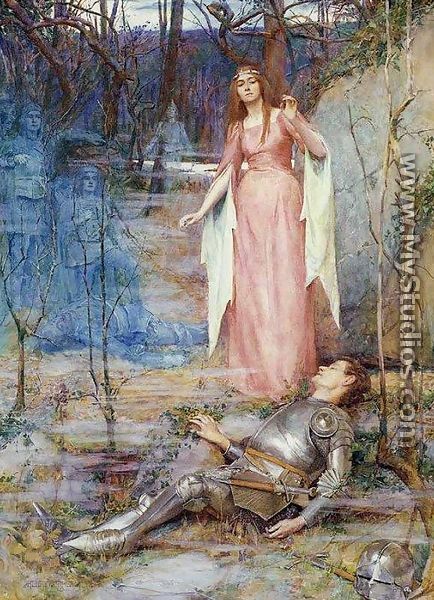BALLADS
The word Ballad is of French provenance. It is a type of poetry which was basically used in dance songs in the ancient France. Later on, during the late 16th and 17th century, it spread over the majority of European nations.
What do I expect from a poetic ballad?
I expect it to be a plot-dirven song, a telling of a story thus a lot of emphasis on the description of the situation the poet is depicting. Moreover a abab rhythm.
RYHTM AND METER
Meter is the rhythm of a ballad. It describes where the emphasis is placed--what words are emphasized, and what words aren't. Almost all ballads have verses consisting of four or six lines, this poem having four; using one of two basic Meters: 4-3-4-3 or 4-4-4-4.
John Keats's Belle Dame poem is a ballad following everything a ballad should have, yet he did change the last verse of each stanza, making it shorter consequently slowing down the reading and by altering the pace he makes an emphasis on these last verses which all tend to have a negative conclusion "And no birds sing". Hereafter even though it is considered a Ballad it does not follow the expected scheme.
Biography
John William Waterhouse was born in April 6, 1849 in Rome, Italy; nevertheless he did return to England during the 1850s. He was a painter like his fathe, he normally used historical and literary subjects, also he painted genre scenes. Moreover some pictures based upon literature and mythology (Miranda, Tristram and Isolde). One of his final works was The Enchanted Garden, left unfinished on his easel at his death, and now in the collection of the Lady Lever Art Gallery in Liverpool. Most of the work he did were exhibited at the Royal Academy, the Society of British Artist and the Dudley Gallery. Despite suffering from increasing frailty during the final decade of his life, Waterhouse continued painting until his death from cancer in 1917. |
| La Belle Dame Sans Merci Waterhouse |
 |
| La Belle Dame Sans Merci Artist: Henry Meynell Rheam (1901) |
This version is a painting that presents more cold colours: the blue the brown, also presenting a wider variety whereas Waterhouse presents a excess of green, which somehow sticks to John Keats devotion to Nature. Which is why the second version presents what we could call as a 'dead' Nature, trees are not blossomed, there is no grass, scarcely some flowers; contrary to the first one were 'living' Nature can be found everywhere in the painting making it more vivid, appealing and beautiful following the schemes of a Romanticism.
Furthermore we can also see a difference in the relationship of the characters in the paintings, Rheam presets a distant relationship were La Belle Dame is standing looking somewhere else other than to the Knight who appears to be in agony on the floor looking at her; In Waterhouse scene, they both appear together, there is contact between them and there is a cleat 'possession' from la Belle Dame involving the Knight in some cloth around his neck when on Rhean version her cloth has peak form which depicts some aggression.
The Darkness present on the poem is very differently faced, Waterhouse clearly makes use of the colours whilst Rheam uses the physical language of the characters both achieving the aim yet having a different affect on the overall production.
No hay comentarios.:
Publicar un comentario